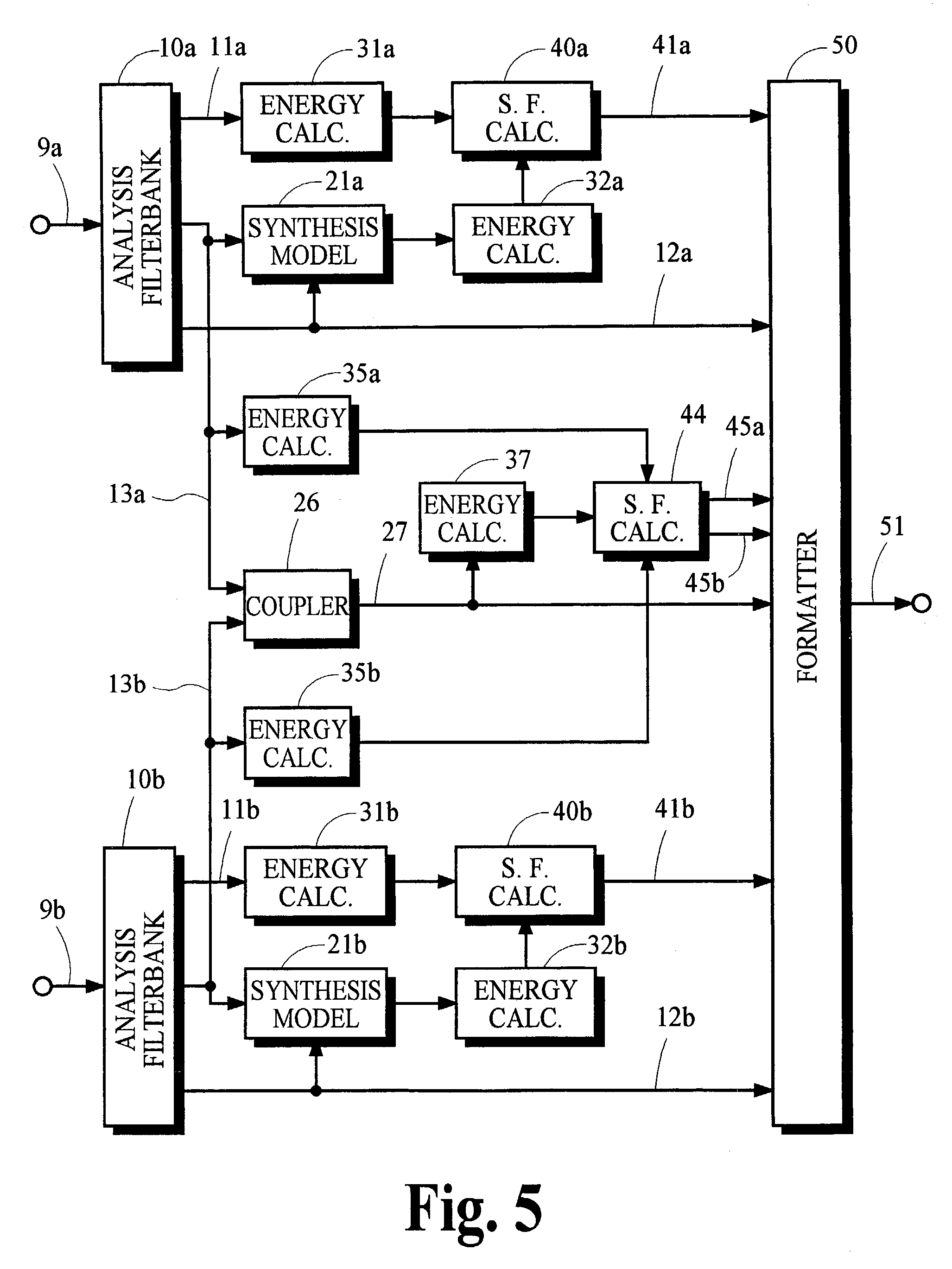Audio coding systems and methods using spectral component coupling and spectral component regeneration
a technology of spectral component and audio coding, applied in the field of audio encoding and decoding devices and methods for transmission, recording and playback of audio signals, can solve the problems of inability to create any missing irrelevant information, inability to discard additional signal portions, and inability to create irrelevant information
- Summary
- Abstract
- Description
- Claims
- Application Information
AI Technical Summary
Problems solved by technology
Method used
Image
Examples
Embodiment Construction
A. Overview
[0029]The present invention pertains to audio coding systems and methods that reduce information capacity requirements of an encoded signal by discarding a “residual” portion of an original input audio signal and encoding only a baseband portion of the original input audio signal, and subsequently decoding the encoded signal by generating a synthesized signal to substitute for the missing residual portion. The encoded signal includes scaling information that is used by the decoding process to control signal synthesis so that the synthesized signal preserves to some degree the spectral levels of the residual portion of the original input audio signal.
[0030]This coding technique is referred to herein as High Frequency Regeneration (HFR) because it is anticipated that in many implementations the residual signal will contain the higher-frequency spectral components. In principle, however, this technique is not restricted to the synthesis of only high-frequency spectral compon...
PUM
 Login to View More
Login to View More Abstract
Description
Claims
Application Information
 Login to View More
Login to View More - R&D
- Intellectual Property
- Life Sciences
- Materials
- Tech Scout
- Unparalleled Data Quality
- Higher Quality Content
- 60% Fewer Hallucinations
Browse by: Latest US Patents, China's latest patents, Technical Efficacy Thesaurus, Application Domain, Technology Topic, Popular Technical Reports.
© 2025 PatSnap. All rights reserved.Legal|Privacy policy|Modern Slavery Act Transparency Statement|Sitemap|About US| Contact US: help@patsnap.com



